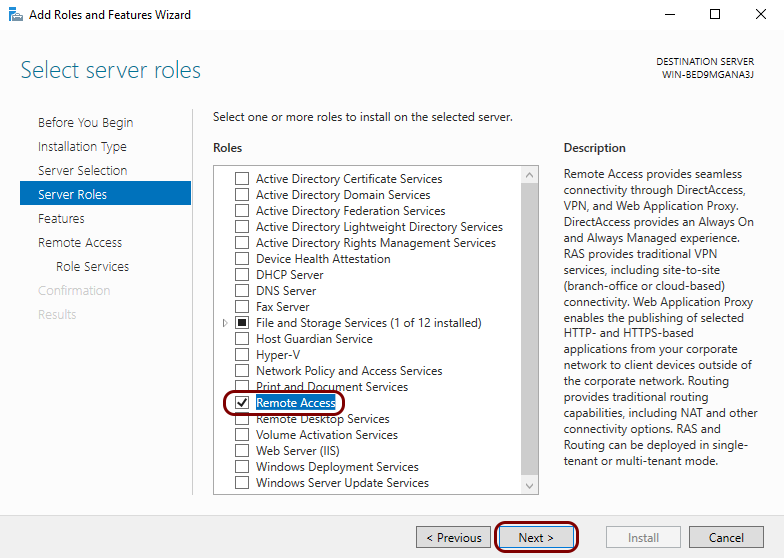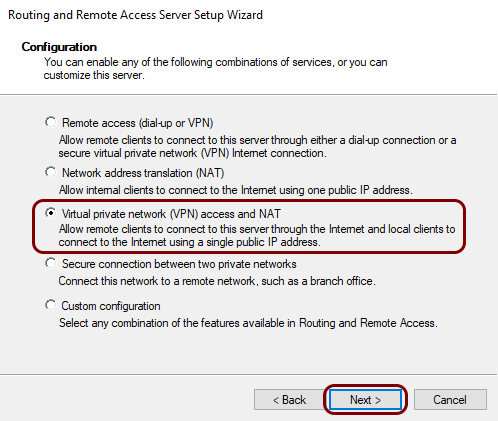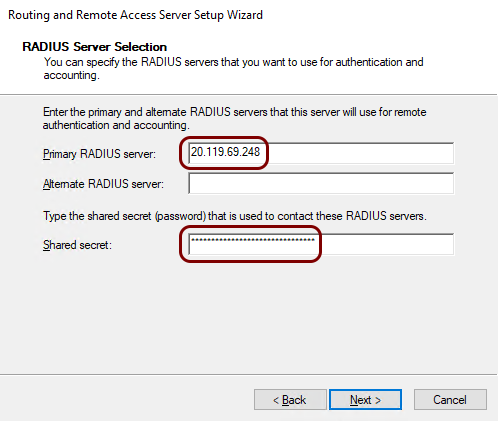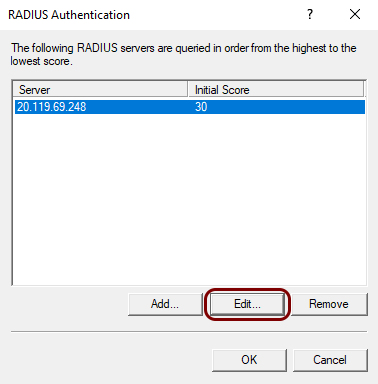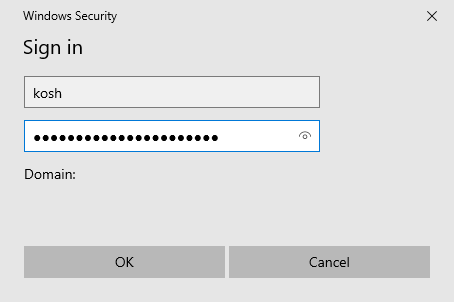VPN – Windows Server Remote Access
In this topic, you will set up Remote Access on a Windows Server to use the Portnox Cloud RADIUS servers for authentication with the Active Directory domain.
Prerequisites:
The client must be connected to a domain and Portnox Cloud must be integrated with Active Directory for this domain (using LDAP Broker).
The Portnox Cloud group that the user belongs to must have VPN access configured.
Add the Remote Access role
In this section, you will add the Remote Access role to your Windows Server configuration using the Server Manager. Skip this section if your server already has this role.
Configure the Remote Access role
In this section, you will configure the Remote Access role using Server Manager to allow for VPN connections.
Test your connection using a Windows VPN client
In this section, you will optionally test your configuration by establishing a VPN connection to the server from a Windows client machine.
Result: The VPN connection is established successfully.




